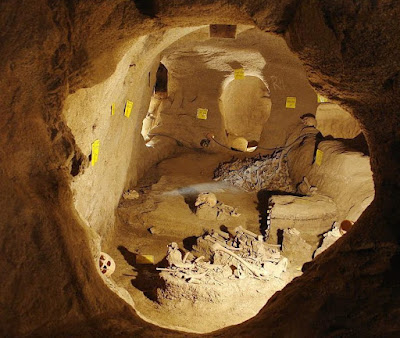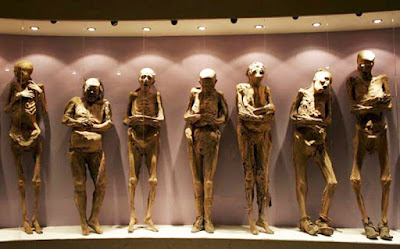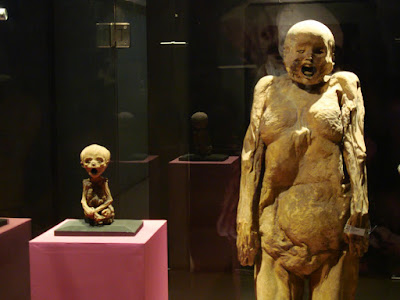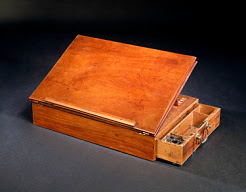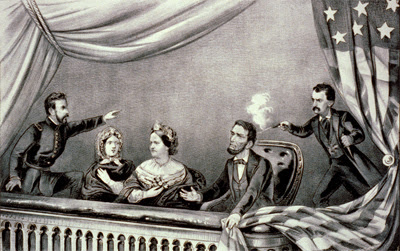History through the books give the feeling that the vanishing of Roanoke state or the Salem witch trials are the most odd occasions in American history, and that once the Puritans got the witch-honey bee out their steeple-delegated caps, the nation sunk into its typical round of wars, duties, and arrangements. Unusual things continued event, obviously, however historians stop focusing, and peculiarities were allegorically committed to dusty, mouse-noticing, corners of the verifiable society storm cellar. The book, Mrs. Wakeman versus the Antichrist (Tarcher, $16.95), is a gathering of recently such rejects.
Not at all like ladies' history, schools don't offer "bizarre history" courses, yet this badly characterized and informal sub-class uncovers a lost America. It's a place the Enlightenment overlooked, with enchantment and franticness excessively fabulous for persuading fiction.
Here are four remarkably spooky episodes from America's uncanny history:
The Town of "Wizard Clip"
Presently called Middleway, West Virginia, the old name of "Wizard Clip" was motivated by a ghost that spooky a family named Livingston. The "Wizard" moniker reflects customary convictions about apparition being made by magicians, and "clasp" alludes to its mark trap of making metallic clipping sounds while cutting everything made of fabric or cowhide into bow formed pieces. There was the standard mysterious vandalism, for example, crushing earthenware, and pulling the heads off the Livingston's ducks, and the typical disappointment of performers and clergymen to stop it, yet a minister at long last removed the Wizard, and the family changed over to Roman Catholicism. It was standard apparition business till "the Voice" arrived.
This was a free voice that showed church principle and immediately settled itself as the family's otherworldly guide. Not at all like the Wizard, when the Voice crushed, copied, or stole something, created frightening screams, or kept the family supplicating throughout the night, these activities got a devout elucidation. It bothered Mrs. Livingstone into leaving home and the greater part of the youngsters grew up needing nothing more to do with religion.
Mr. Livingston passed on in 1820 and left his ranch to the congregation. It is currently Priest Field Pastoral Center and a wooden remembrance demonstrates the benefactor squashing sickles triumphantly underneath.
While unexplained wonders are intriguing, they are just a single part of American peculiarity; individuals like Rhoda Wakeman scale the bewildering statures of weirdness without them.
Rhoda Wakeman's Cult
Many trust that America's first faction was Charles Manson's "Family" and that they submitted the nation's first clique killings. Indeed, the nineteenth century was a nursery for capricious religions, and some turned fierce; Arkansas' Cobbites executed a doubter then pierced his head on a fence post, while the Wakemanites asserted three casualties in Connecticut.
Their pioneer, the prophetess Mrs. Wakeman, was an insane old lady who trusted that her plastered spouse killed her at some point around 1825. She went to Heaven, turned into God's Messenger, and was revived; the proceeded with presence of the universe relied on upon Mrs. Wakeman's survival, so the Antichrist continued attempting to execute her. The detestable soul initially showed up in Mr. Wakeman, then hopped to a trusted devotee who about destroyed her with a cut of mysteriously harmed pie. From that point it moved into a harmless Wakemanite named Matthews, whose nearness made little animals wriggle agonizingly inside her body.
The clique met to remove the Antichrist on December 23, 1855, however Mrs. Wakeman's agony wound up noticeably intolerable, and her stepbrother Samuel needed to drive out the devil by beating Matthews with a stick, slitting his throat, and driving a fork into his trunk. The carcass was found the following day and the gathering captured.
After eight days, on New Year's Day, 1856, a woodcutter who went to Mrs. Wakeman's gatherings, slashed the heads off two old men with a hatchet. Regardless of the woodcutter's undeniable madness, he would have hanged had a fever not slaughtered him first. Rhoda Wakeman and Samuel were attempted, dedicated to refuges, and overlooked, however for just about a century Americans alluded to hazardous religious extremists as "Wakemanites."
Another, later, illustration is amazing for its absence of zeal.
Cloretta Robertson's Stigmata
In March 1972, 10-year-old Cloretta Robertson's left hand started dying. She was sent to the medical caretaker at Santa Fe Elementary School in Oakland, with what ended up being an instance of stigmata.
It's an uncommon marvel, in which the injuries endured by Jesus show up suddenly, as a rule on a white, Roman Catholic lady. Cloretta was dark, Protestant, and prepubescent, yet specialists found no proof of physical disease or self-injuring, nor was she crazy, dramatic, or even troubled. The proof proposes that a consummately typical, and extremely religious, young lady can do the unimaginable and seep through unbroken skin.
The Robertson family's minister was amped up for the marvel, which returned most years around Easter, and made Cloretta the principle fascination at the Youth Supernatural End-Time Revival from 1975 to 1977.There is no say of her showing up from that point onward, however for each Cloretta Robertson who stays away from attention there's a James Moon searching it out.
James Moon's "Kari"
Moon was a rancher who longed to be acclaimed. On the morning of June 10, 1876, he registered with the Lahr Hotel in downtown Lafayette, Indiana, then ran errands. He went to a handyman shop, physicist, and foundry, had his whiskers shaved off, and helped the doorman convey a substantial trunk up to his room. Moon resigned after supper and did not get up the following day, which exasperated the housemaid. She held up until late toward the evening before going into the room and finding Moon's body with the cutting edge of an immense hatchet covered in the neck; then she began screaming.
The hatchet was inherent the room. Moon's overwhelming trunk had contained measured lengths of wood, equipment, and devices, and his errands had included acquiring the leader of a broadaxe and having iron plates dashed to it. He darted the wood together into a shaft seven feet since quite a while ago, appended the sharp edge to one end, and screwed one wing of a pivot to the next. The other wing was screwed to the floor, transforming the hatchet into a major lever.
Moon lifted the free end of the hatchet lever until it was at roughly a 45-degree point, then secured it with a line. He tied one end of the rope to a metal section on the divider, passed the flip side through a metal ring screwed into the shaft, then fixing it to the section. A light was set on the section such that it would consume through the rope, and Moon lit the wick. He set down on the floor with his neck in the way of the sharp edge, put his head in a case of chloroform doused cotton, and breathed in stunning exhaust till the hatchet dropped.
Word spread quick and hundreds accumulated to see the gadget that Moon named the "kari" (he most likely signified "hari-kari"). While the innovator's dowager covered him, "Moon's Guillotine" was shot, shown all through the Midwest, and earned him a measure of distinction; Britain's Illustrated Police News detailed his demise as "An Extraordinary Suicide", and he has a changeless place in nearby old stories. Yet, why account the demonstrations of a self-beheading rancher?
"In her irregularities," Goethe expressed, "nature uncovers her privileged insights." a similar rule applies to peculiar history, where "variations from the norm" like over the top enthusiastic apparitions, desperate cultists, and adolescent stigmatics, uncover parts of America's past that respectable history can't.
Robert Damon Schneck can be come to at his Facebook/blog. More: Mrs. Wakeman versus The Antichrist and Other Strange-yet True Tales from Americn History.

